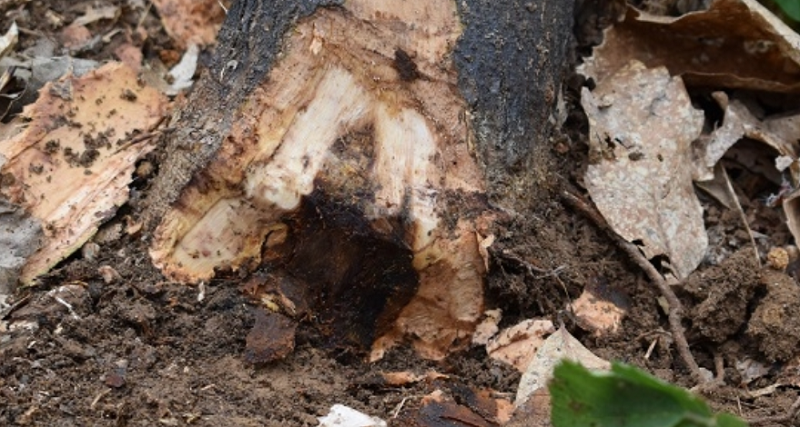
Symptoms
- Root necrosis:
Roots infected by Phytophthora cinnamomi or P. cambivora are recognisable by their black colour. They are no longer functional and rot because of tissue death (Figure 1). These root losses are the primary symptoms.
Root infections are difficult to observe on mature trees. An attempt should be made to dig up the large main roots that come up to the crown of dying trees. It is advisable to look for naturally regenerated plants to easily observe the root systems. These infections can result in two types of symptoms.
- Cortical necrosis of stems or trunks:
When the pathogen has caused severe root damage, this damage extends into the base of the trunk (the collar, Figures 2 and 3). Black discharges flow from cracks in the bark covering the infected parts of the crown. When the bark is stripped, the cortical tissues and bare wood are coloured brown, whereas under the bark in the uninfected area they are pearly white (Figures 4 and 5). These necrotic tissues are the tissues invaded by the pathogen.
- Dieback:
Necrosis of fine roots results in wilting of young plants (Figure 5), which is most visible during periods of water stress in adult trees and results in a decline, or dieback, over a longer period.
Infection of the main roots and destruction of a significant part of the root system leads to a reduction in the nutrient and water supply of the tree, which then shows symptoms of generalised decline, sometimes accompanied by chlorosis, yellowing and defoliation (Figures 6 and 7). These symptoms are all the more marked in periods of drought, and lead to the death of the tree, sometimes very quickly.





